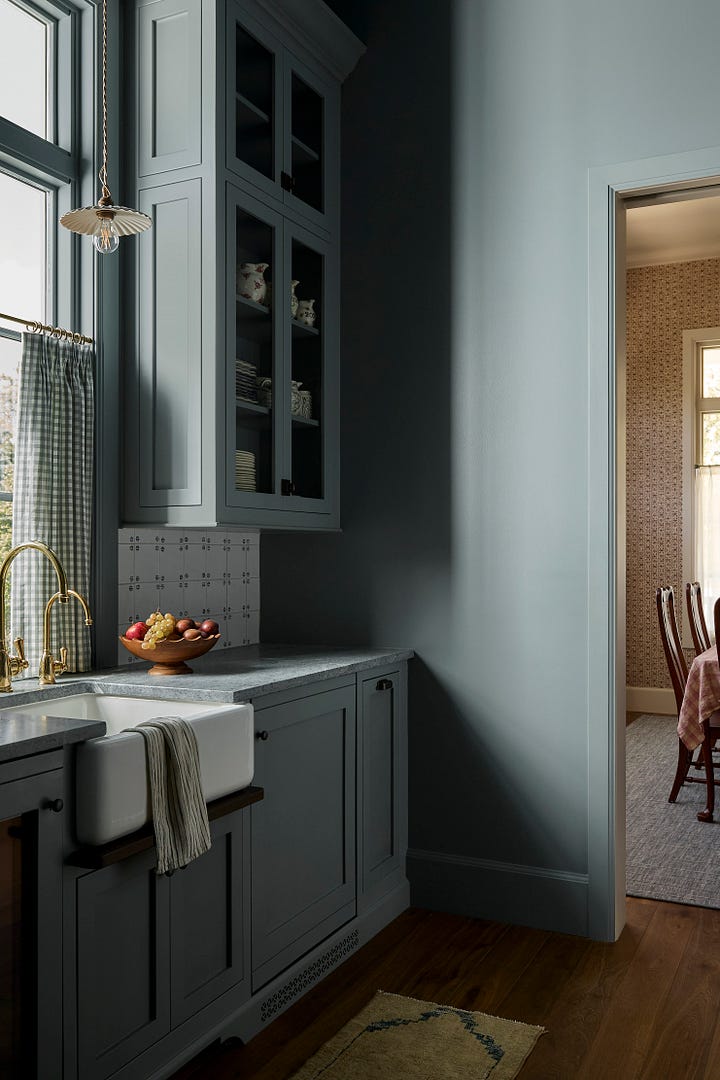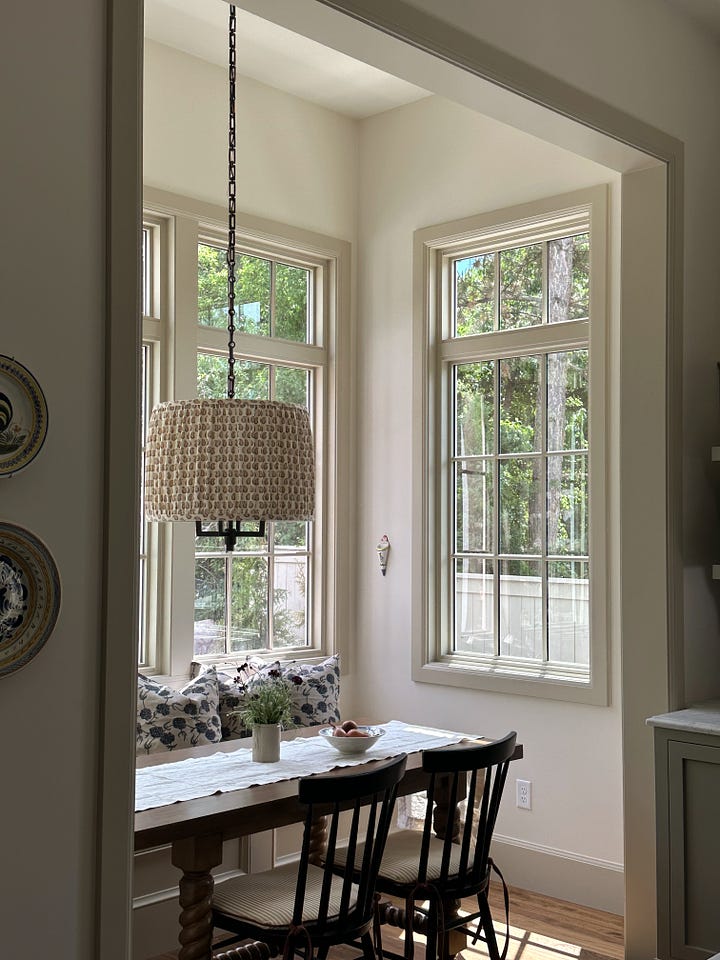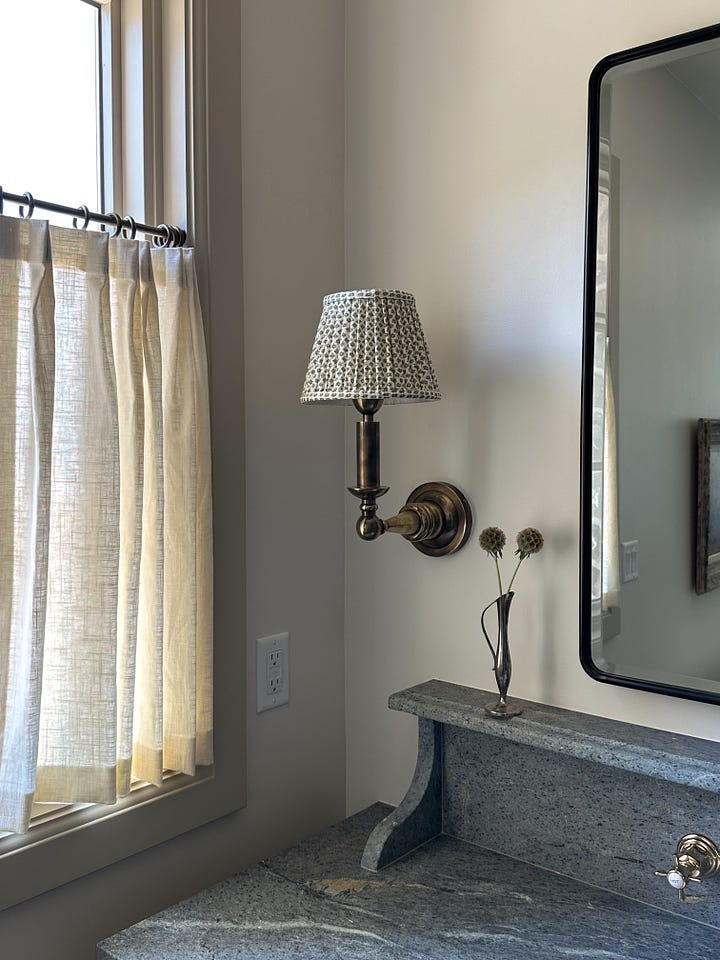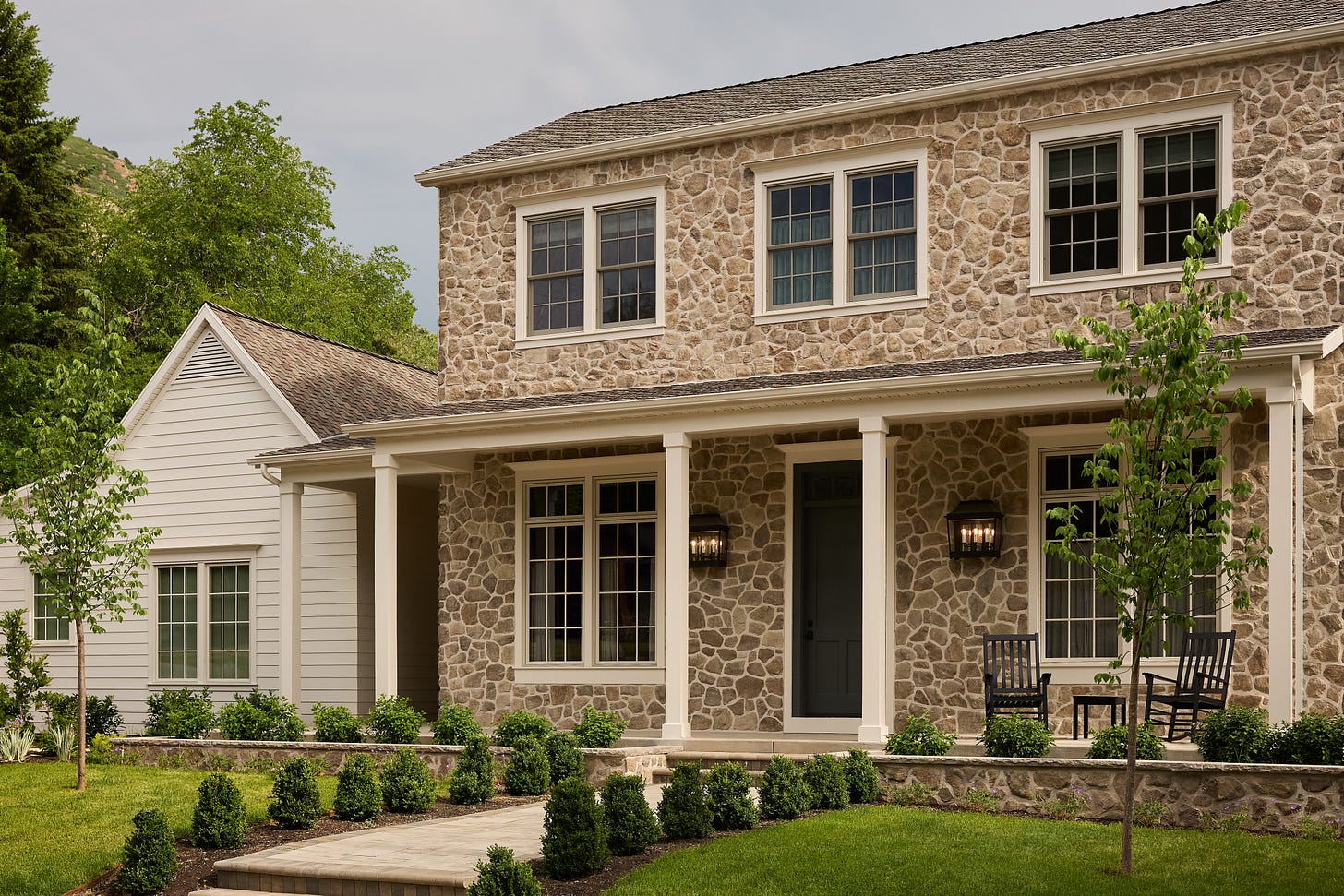How to Build a New Old Home
tips to make new construction feel as though it’s been there all along
Creating a sense of place and permanence with a new home can be hard to do. It’s not as if we want our homes to feel “old” per se, it’s that we want them to feel like they belong. We want them to feel settled on the land and in the neighborhood and city where they reside. We want them to have character and interest. When I like a home and I’m not quite sure when it was built, that’s the sign of good design.
Our Spring Creek project is a great example of this—we wanted to create something authentic to our empty-nester clients who wanted a home that reflected their Utah Pioneer heritage. Working with the contractors and the architect from the ground up, we ensured that the property carried the simple English-influenced architecture of historic pioneer homes found throughout Salt Lake City both on the interior and exterior. After releasing this project, we got so many questions about how we made this “new build” feel old and historic. Today we’re sharing some of our tips on how to make a newer home feel like an authentic and historic home that’s been there for years.
Tips for the exterior
Do your research. To make a home feel truly historic, it's essential to look to the past for inspiration, particularly at the architectural styles and design trends of the specific time period you’re trying to replicate. Pay attention to the time period your city was settled to make sure your home doesn’t feel “theme-y” by being from an era that was before your city was settled.
Choose an era you want to replicate. Are there key elements you need to follow to make it feel authentic? What do the surrounding homes in the area look like? Maybe you like a New-England Colonial style home, but don’t like that style from the 1800s but rather the 1900s? There are differences in design elements, scale, windows, depending on the era you like.
Pay attention to the pitch of the roof/house. I’ve seen a lot of new construction homes lose the feeling of authenticity with their rooflines and pitches.


House on the left has a dramatic, taller scale that shows it was built in the last 5 years. House on the right (by Steve Tiek) is new but has a pared down scale that is more historic. Be thoughtful about window scale and style. Windows can make or break a home and are one of the easiest ways to identify a new home vs. an older home. This might be an unpopular opinion, but I think a lot of new homes have too many windows, and/or the windows are too big and it can actually take away from the architectural interest of a home. Also, too many windows from the inside can leave the home feeling cold and little bare because there is less wall space for finish work/art/layering within a home.


Home on the left (by Steve Tiek) has an older historic look with the smaller window panes typical of a colonial home. Home on the right shows how big modern windows date this Craftsman home to feel "new build" and the scale of the windows is too big for the architecture. One of the best things I’ve learned from the architects we’ve worked with is that the more natural materials used on the exterior, the more timeless the home will be. Even if natural materials show weather and wear quicker, they help the home hold it’s value. The more man-made materials on a home, the more it will show its’ construction age and can lose value over time because the home will look “outdated”.
Tips for the interior
Look to history. Beyond architecture, history can also influence the furniture that you use, patterns that you choose, and influence your overall color palette. Try looking beyond mainstream sources like Pinterest and explore history books, art galleries/museums, or even old hotels for inspiration.
Go for more of a traditional floor plan. Designated rooms vs. an open floor-plan makes for a cozier feel and creates a more interesting flow to a home.
Don’t be afraid to use unique paint colors. An all white or gray house typically feels very new and “blah”. Also consider using less typical types of paint, like lime-based paint or plaster, or a high-gloss finish that mimics the oil-based paint of the past.


Use wallpaper and window coverings. Layering creates the feeling of a lived in home, regardless of how long it’s been there.
Install finish work in your home. We typically specify a base and case and often end up using tongue and groove paneling or a picture/chair rail detail.
Get creative with furniture and accessories. Although it’s not practical to use only vintage furniture pieces in a newer home, adding in vintage items throughout can make a big difference and make the home feel more settled and interesting. Walking into a new home that feels like a furniture showroom rarely feels as good as a home that has some history woven in.
Use patterned fabrics. Something as simple as using patterned fabrics can totally change the way that a sofa or light fixture feels. In the breakfast nook at Spring Creek, we chose a new light fixture, but decided to have the shade upholstered with a patterned fabric—this helped the space not only feel warm and layered, but creates the feeling that the light fixture didn’t come straight out of a box.


Creating a home that considers the trends of the time it is built but isn’t defined by them, (whether it is a historic-inspired home or a modern, forward-thinking home) is what we always aim for and I hope some of these tips will inspire you and help you understand why some homes have a greater sense of “place” than others. And as always, let us know in the comments if you have any questions. Thanks for reading!



Inspired.
How does one go about doing a custom shade with custom fabrics, love the look. Thank you